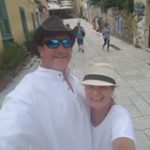Chankillo is an archaeological complex with ritual, astronomical, administrative, and defensive functions. Its astronomical function defines its universal value. Through ample evidence, it has been shown that between 500-200 BC people at the site made direct observations of the movement of the Sun with the purpose of regulating seasonal events such as religious festival and the keeping of a seasonal calendar.
Unlike other so-called “observatory” sites around the world, which mark unequivocally only one or two dates, solar observations at Chankillo covered the span of its annual cycle. Through sunrise and sunset observations of solar alignments over an artificial horizon, it was possible to identify with great precision the dates of solstices and equinoxes, as well as any other date throughout the seasonal cycle of the sun. In this sense, the Chankillo astronomical observatory is unique and exceptional, not only in Peru or in the Americas, but worldwide.
Chankillo is found in the Ancash region, Peru, 365 km north of Lima, and 15 km from the Pacific coast. Lying to the west of the Andes mountain range, this is one of the world’s driest deserts, a landscape of foothills, valleys, and plains that has geologically remained relatively unchanged since the Pleistocene. In detail, Chankillo lies adjacent to the irrigated valley of the southern branch of the Casma/Sechin River basin, facing the rugged foothills of the western slopes of the Andes. Like many of Peru’s coastal valleys, the Casma and Sechin valleys have long been an ‘oasis’ for settlement in an otherwise inhospitable desert.
Archaeological sites such as the Sechin Complex, Pampa de las Llamas-Moxeke, Las Haldas, El Purgatorio, and Manchan, demonstrate a long period of occupation (4500 years) from the late Preceramic Period to the Incas, suggesting that the Casma province has always been an important regional ceremonial center. Notwithstanding the recently revealed significance of Chankillo, sites in Casma relating to the Initial Period are unequalled nationally in terms of their size, quality, and ‘public architecture’. It is now only the ceremonial structures that survive, generally using spaces that would not compromise maximum use of the riverside land for agriculture. The less robust residential sites and cemeteries, perhaps more closely associated with the cultivation zone along the rivers, are no longer visible.
Dozens of 14C dates, ranging 2350-2150 CalBP place the construction, occupation, and abandonment of Chankillo within the late Early Horizon period (500–200 BC) of the central Peruvian chronology (Burger 1995).
The site is spread over 4 sq. km, which includes various occupations and several monumental stone and mortar constructions, originally plastered and painted with ochre, tan, yellow and white, sometimes bearing painting or textured with finger impressions.









